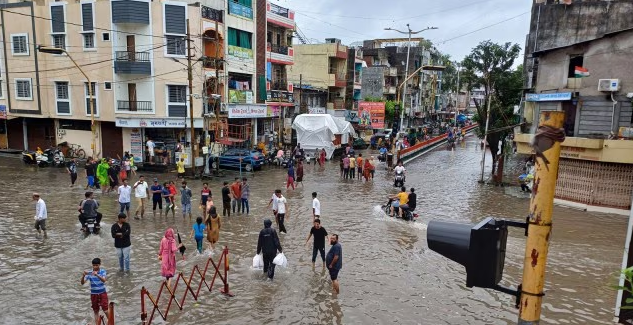Weather Resilience (GS Paper 3, Environment)

Context:
- The India Meteorological Department (IMD) is poised for a much-needed upgrade to enhance its weather forecasting capabilities and improve India's climate resilience.
Introduction:
- Despite significant improvements in the IMD's ability to forecast long-range weather patterns over the past decade, the challenge of predicting extreme weather events remains a pressing issue.
- Upgrading the IMD's forecasting systems is crucial to better handle these climate challenges.
Need for Upgrade in IMD
Current Limitations:
- Forecast Accuracy: While the IMD has made progress in predicting average weather conditions over extended periods, there are frequent inaccuracies in predicting specific weather events, particularly during the monsoon season.
- Extreme Weather Events: The current forecasting models struggle with predicting extreme weather events such as intense rainfall and localized weather phenomena, which are crucial for effective disaster preparedness and response.
- Administrative Challenges: Administrators often face difficulties in responding to sudden weather events due to insufficient localized weather information, leading to ineffective disaster management and increased vulnerability.
Challenges in Current Forecasting:
- Localized Predictions: There is a need for more precise, hyper-local weather predictions to address the variability in rainfall and temperature at the district, block, and even street levels.
- Knowledge Gaps: To make India more climate-resilient, significant gaps in weather prediction knowledge must be addressed, including improving the accuracy of forecasts for extreme weather conditions.
Neo Upgrades and Improvements in IMD
Infrastructure and Technology Upgrades:
- Enhanced Modeling: The focus of recent upgrades should shift towards developing advanced computer-simulated models that are customized for local weather specifics, enhancing the accuracy of forecasts.
- Data Collection: Upgrading requires an expansion of data collection efforts, incorporating a dense network of weather measurement instruments at granular levels such as districts, blocks, and even individual wards.
- Artificial Intelligence: Leveraging AI can enhance forecast accuracy by analyzing digitized weather records and patterns to predict extreme weather events more effectively.
- Research Integration: Utilizing research from universities and institutions can provide valuable insights and technological advancements to improve weather forecasting capabilities.
Capacity Building and Information Dissemination:
- Training Communicators: To effectively communicate weather information, a trained cadre of communicators should be developed. These individuals must be adept at understanding and addressing local economic and cultural contexts.
- Vulnerable Populations: Ensuring that weather information reaches the most vulnerable segments of society is essential for effective disaster preparedness and response.
Way Forward
Strategic Actions:
- Develop Localized Models: Invest in the creation of highly localized weather forecasting models that can provide accurate predictions at the community level.
- Expand Data Network: Establish a comprehensive network of weather measuring instruments to capture detailed and precise weather data across different regions.
- Utilize AI and Research: Incorporate AI technology and academic research to refine forecasting methods and improve the reliability of extreme weather predictions.
- Enhance Communication: Train communicators to effectively relay weather information, particularly to high-risk communities, ensuring they are informed and prepared for adverse weather events.
Conclusion:
- The IMD’s upgrade is crucial for addressing the challenges posed by climate change and extreme weather events.
- By investing in advanced forecasting technologies, improving data collection, and enhancing communication strategies, India can build greater resilience against the impacts of climate variability.
- Effective implementation of these upgrades will not only improve weather predictions but also strengthen the country’s ability to manage and mitigate the effects of extreme weather, ultimately safeguarding communities and infrastructure.


